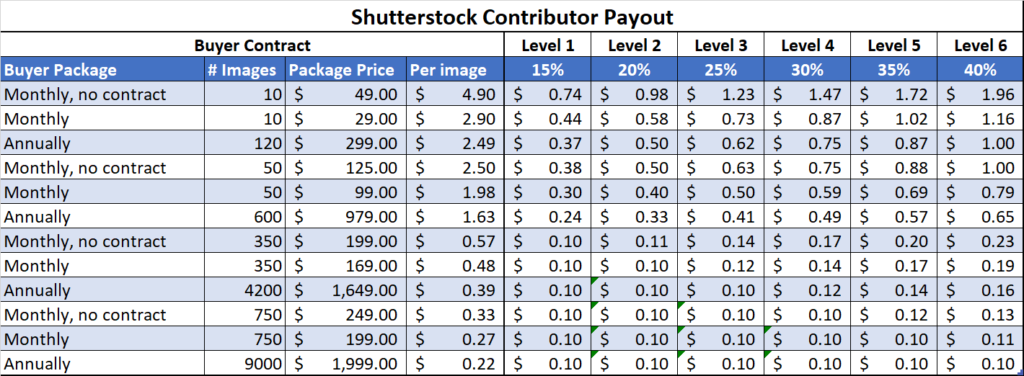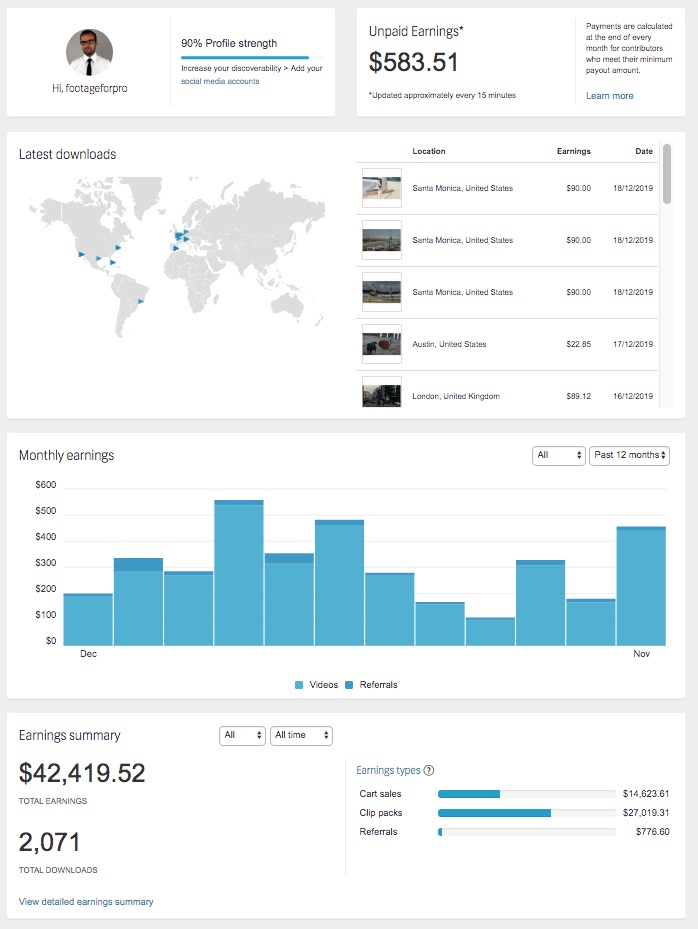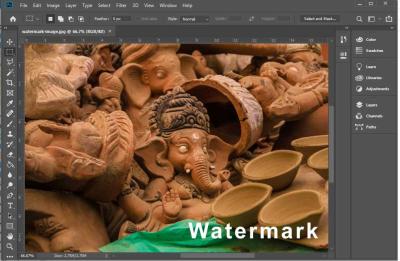Ever wondered how much you can earn from your photos on Shutterstock? Whether you’re a seasoned photographer or just starting out, understanding your earnings per photo is key to making the most of your contributions. Shutterstock offers a platform where your images can be seen by millions worldwide, but the amount you make depends on several factors. In this post, we’ll break down the basics of
Factors That Influence Your Photo Earnings on Shutterstock

Several elements play a role in determining how much you earn from each photo on Shutterstock. Understanding these factors can help you optimize your submissions and increase your earnings over time. Here’s what you need to keep in mind:
- Contributor Level: Shutterstock rewards active contributors with higher earning rates. As you submit more approved photos, your contributor level increases—from Standard to Silver, Gold, and Platinum—which boosts your earnings per download.
- Download Type: Shutterstock offers different types of downloads, like standard and enhanced. Standard downloads are more common and typically pay less, while enhanced downloads are higher-value and pay more. Your earnings depend on the type of download.
- Customer Location: Earnings can vary based on where the customer is located. Some regions have higher purchasing power, which can influence the amount paid per download.
- Subscription vs. On-Demand Purchases: Shutterstock offers subscription plans and on-demand purchases. Subscribers usually download many images for a lower fee, which means your earnings per download might be lower compared to single-image purchases, but the volume can compensate.
- Image Quality and Relevance: High-quality, relevant images are more likely to be downloaded. Keywords, tags, and accurate descriptions help your photos reach the right audience, increasing download chances and earnings.
- Exclusive vs. Non-Exclusive Content: Exclusive contributors often earn higher rates because they agree to offer their images only on Shutterstock. Non-exclusive uploads might earn slightly less but give you more flexibility across platforms.
By paying attention to these factors and continuously improving your portfolio, you can boost your earnings per photo on Shutterstock. Remember, consistency, quality, and strategic keywording are your best tools for increasing your income potential!
How Shutterstock Payment Structure Works

So, you’re curious about how Shutterstock actually pays you for your photos? It might seem a bit complex at first glance, but once you get the hang of it, it starts to make sense. Shutterstock‘s payment system is designed to reward contributors based on their contributor level, the type of license purchased, and the specific photo’s performance.
Here’s the breakdown:
- Contributor Levels: Shutterstock has a tiered system, starting from New Contributor and moving up to Elite Contributor. As you upload more photos and earn more, you climb the ranks. Higher levels come with better royalty rates.
- Royalty Rates: Your earnings per download depend on your contributor level and the license type. There are generally two types of licenses:
- Standard License: Suitable for most uses, like websites, social media, and presentations. It pays a lower royalty rate.
- Enhanced License: For larger-scale uses like merchandise or print runs, offering higher earnings per download.
- Payment Calculation: When someone downloads your photo, Shutterstock calculates your earnings based on the license type and your current royalty rate. For example, a standard license might pay you around 20-30%, while an enhanced license can pay 30% or more.
- Payment Threshold and Schedule: Once you reach the minimum payout threshold (usually $35), Shutterstock processes your payment. Payments are typically made via PayPal or bank transfer, and you can expect them on a monthly schedule, usually around the 15th of each month.
It’s worth noting that Shutterstock also offers incentives and bonuses for top contributors, so consistently uploading high-quality images can boost your earnings over time. The key takeaway? The more your photos sell, the more you earn, and your contributor level can significantly influence your per-photo payout.
Average Earnings Per Photo on Shutterstock

Understanding what you can expect to earn per photo on Shutterstock is a common question among new contributors. The truth is, it varies quite a bit depending on several factors, like your contributor level, the quality of your photos, and how often they sell.
On average, most contributors see earnings ranging from $0.25 to $2.00 per download. That might not seem like much at first, but remember, a single photo can sell multiple times over its lifetime, leading to passive income that adds up over time.
Here’s a quick overview of typical earning ranges based on contributor levels:
| Contributor Level | Average Earnings Per Photo | Notes |
|---|---|---|
| New Contributor | $0.25 – $0.50 | Initial sales may be slow; focus on quality and niche topics. |
| Mid-Level Contributor | $0.50 – $1.00 | With more uploads and better visibility, earnings tend to improve. |
| Elite Contributor | $1.00 – $2.00+ | Top-tier contributors with high-volume sales can earn even more per photo. |
It’s important to keep in mind that these are averages. Some photos might sell only once or twice, earning just a few cents, while others might become best-sellers, earning hundreds of dollars over time. The key is to upload consistently, focus on trending topics, and improve your photography skills to make your images stand out.
Plus, remember that your earnings per photo are not static. As your portfolio grows and your reputation increases, your photos are more likely to be discovered and purchased, boosting your overall income.
Tips to Maximize Your Income as a Shutterstock Contributor
Thinking about boosting your earnings on Shutterstock? You’re in the right place! While earning per photo can vary based on many factors, there are definitely strategic ways to increase your income and make your portfolio work harder for you. Here are some practical tips to help you maximize your earnings:
Optimize Your Keywords and Titles
Good keywords are like a map guiding buyers to your images. Use descriptive, relevant keywords that accurately reflect your photo’s content. Think about what potential buyers might search for and include both broad and specific terms. Avoid keyword stuffing—quality always beats quantity. Clear, targeted keywords can make a big difference in visibility and sales.
Create High-Quality, Marketable Images
Quality matters more than ever. Invest time in capturing sharp, well-composed photos with good lighting. Stay current with trends—whether it’s lifestyle shots, technology themes, or nature scenes—so your images appeal to current market demands. Remember, images that resonate emotionally or solve a problem tend to sell better.
Focus on Niche Markets
Specializing in a niche can set you apart from other contributors. Whether it’s food photography, business concepts, or unique textures, becoming known for a specific style or subject can lead to a dedicated following and more consistent sales. Do some research to discover underserved markets and tailor your portfolio accordingly.
Keep Your Portfolio Fresh and Active
Uploading new images regularly keeps your portfolio lively and increases your chances of being featured. Shutterstock’s algorithm favors active contributors, giving newer images more exposure. Plus, fresh content attracts repeat buyers who look for new visuals to fulfill their projects.
Leverage Your Best Work
Identify your top-performing images—those with the highest downloads and earnings—and create similar variations or related themes. Promoting these top images on social media or personal websites can also drive additional traffic and sales.
Understand Licensing and Usage
Offering the right licensing options can impact your earnings. Standard licenses are common, but if your image is used for high-value projects, extended licenses can significantly boost your income. Familiarize yourself with Shutterstock’s licensing options to maximize revenue from each sale.
Engage with the Contributor Community
Join forums and social media groups dedicated to Shutterstock contributors. Sharing tips, feedback, and success stories can inspire new ideas and strategies. Plus, staying connected helps you stay updated on platform changes and best practices.
By applying these strategies, you’ll be better positioned to increase your earnings per photo over time. Remember, consistency and quality are key—keep refining your craft, stay active, and you’ll see your income grow!
Conclusion and Final Thoughts on Earning Per Photo
Understanding your earnings per photo on Shutterstock might seem complex at first, but it’s a powerful way to gauge your success and identify opportunities for growth. Remember, your earnings depend on multiple factors—image quality, keywords, market demand, licensing types, and your overall activity as a contributor.
While the average earnings per photo can seem modest, especially when starting out, the real potential lies in building a diverse, high-quality portfolio and continuously optimizing your approach. Think of your portfolio as a growing asset—you can increase its value over time by focusing on trending topics, staying consistent with uploads, and engaging with the community.
Ultimately, patience and persistence are your best allies. Don’t get discouraged if some photos don’t perform as expected. Use those experiences as learning opportunities, refine your technique, and keep experimenting. Over time, you’ll develop a better understanding of what sells and how to position your work for maximum impact.
So, keep creating, keep learning, and stay committed. With dedication, your earnings per photo can improve, turning your passion for photography into a rewarding side income or even a full-time gig. Happy shooting, and here’s to your success on Shutterstock!


